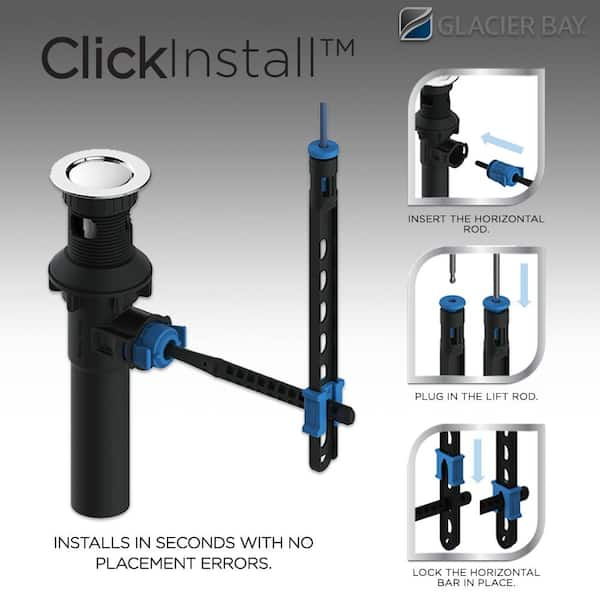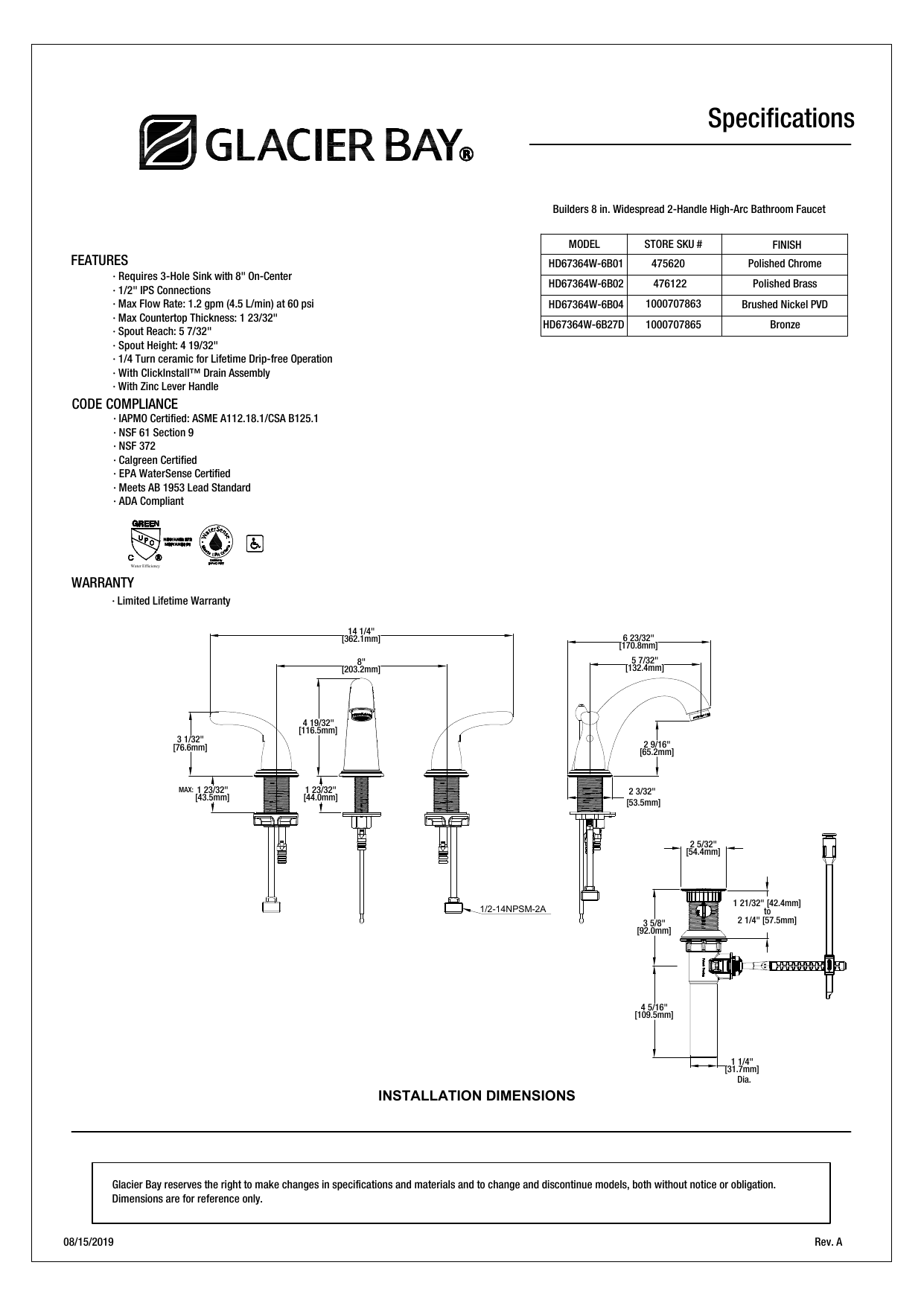Preparing for Installation: A Step-by-Step Guide
Measure and Plan: Before you begin the installation process, it’s essential to measure your sink and determine the appropriate faucet size. Take note of any existing holes and ensure that the new faucet will fit properly. Additionally, plan the placement of the faucet, considering factors like spout reach and handle clearance.
- Gather the Necessary Tools: To make the installation process smooth, gather all the tools you’ll need. These typically include an adjustable wrench, a basin wrench, a plumber’s tape, a screwdriver, and a silicone sealant. Having these tools readily available will save you time and frustration during the installation.
- Turn off the Water Supply: Before you start installing the faucet, it’s crucial to turn off the water supply. Locate the shut-off valves under the sink and close them by turning them clockwise. Once the water supply is turned off, open the faucet to release any remaining water in the lines.
- Remove the Old Faucet: Begin by disconnecting the water supply lines from the existing faucet using an adjustable wrench. Next, remove any mounting nuts or screws that secure the faucet to the sink. Once these are removed, carefully lift the old faucet out of the sink, ensuring not to damage any surrounding fixtures.
- Clean and Prepare the Sink: With the old faucet removed, thoroughly clean the sink surface to remove any residue or debris. Check for any signs of damage or corrosion that may need to be addressed before installing the new faucet. Additionally, apply plumber’s tape to the threaded connections on the faucet to ensure a watertight seal.
- Install the New Faucet: Carefully lower the new Glacier Bay bathroom faucet into the mounting holes on the sink. Ensure that the faucet is properly aligned and leveled. Tighten the mounting nuts or screws to secure the faucet in place, using an adjustable wrench or screwdriver as necessary. Finally, reconnect the water supply lines, ensuring that they are tight and secure.

Tools and Materials Required for Glacier Bay Bathroom Faucets Installation
Adjustable Wrench: An adjustable wrench is an essential tool for loosening and tightening nuts and bolts during the installation process. It allows you to adjust the wrench size to fit different sizes of nuts and bolts.
Basin Wrench: A basin wrench is specifically designed to reach and tighten nuts and bolts in tight spaces, such as those found under the sink. It has a long handle and a swiveling jaw that makes it easier to access hard-to-reach areas.
Plumber’s Tape: Plumber’s tape, also known as Teflon tape, is used to create a watertight seal on threaded connections. It helps prevent leaks by filling in the gaps between the threads.
Screwdriver: A screwdriver is necessary for removing or installing screws during the faucet installation process. It’s essential to have both a flathead and a Phillips head screwdriver, as different faucets may require different types of screws.
Silicone Sealant: Silicone sealant is used to create a waterproof seal around the base of the faucet. It helps prevent water from seeping underneath the faucet and causing damage to the sink or surrounding area.
Water Supply Lines: Depending on the specific faucet model, you may need to purchase new water supply lines. These are flexible hoses that connect the faucet to the shut-off valves and allow water to flow into the faucet.
Installing the Faucet: A Detailed Walkthrough
Start by assembling the faucet according to the manufacturer’s instructions. This typically involves attaching the handles, spout, and any other components.
Before installing the faucet, turn off the water supply by closing the shut-off valves located under the sink. Open the faucet to release any remaining water in the lines.
Position the faucet in the mounting holes on the sink, ensuring that it is properly aligned and level. Secure the faucet in place by tightening the mounting nuts or screws using an adjustable wrench or screwdriver.
Connect the water supply lines to the corresponding hot and cold water shut-off valves. Use an adjustable wrench to tighten the connections, ensuring they are snug but not overtightened.
Turn on the water supply by opening the shut-off valves. Check for any leaks around the connections or the base of the faucet. If necessary, tighten the connections or apply the plumber’s tape to create a watertight seal.
Finally, test the faucet by turning on the hot and cold water. Ensure that the water flows smoothly and that there are no leaks or drips. If you notice any issues, double-check the connections and make any necessary adjustments.
Troubleshooting Common Installation Issues
Leaking Connections: If you notice leaks around the water supply line connections or the base of the faucet, try tightening the connections with an adjustable wrench. If the leaks persist, consider applying the plumber’s tape or replacing the faulty parts.
Uneven or Wobbly Faucet: If the faucet feels loose or wobbly, check that it is properly aligned and level. Tighten the mounting nuts or screws as necessary to secure the faucet in place. If the issue persists, you may need to use additional shims or washers to stabilize the faucet.
Low Water Pressure: If you experience low water pressure after installing the faucet, check that the shut-off valves are fully open. Additionally, inspect the faucet aerator for any mineral buildup or debris that may be obstructing the flow. Clean or replace the aerator if necessary.
Dripping or Leaking Spout: If you notice water dripping or leaking from the spout when the faucet is turned off, it may indicate a faulty cartridge or valve. In this case, consult the manufacturer’s instructions or contact customer support for guidance on troubleshooting and potential replacement.
Noisy Faucet Operation: If the faucet makes unusual noises, such as rattling or squeaking, it may be due to loose or worn-out components. Check that all connections and mounting nuts are properly tightened. If the issue persists, consider replacing any worn-out parts or contacting customer support for assistance.
Tips for Proper Maintenance and Care
Regular Cleaning: To keep your Glacier Bay bathroom faucet looking and functioning at its best, regularly clean it with mild soap and warm water. Avoid using abrasive cleaners or harsh chemicals that may damage the faucet’s finish.
Avoid Hard Water Buildup: If you live in an area with hard water, consider installing a water softener or using a descaling solution periodically to prevent mineral buildup on the faucet. This will help maintain optimal water flow and prevent damage to the internal components.
Check for Leaks: Periodically inspect the faucet connections and base for any signs of leaks. If you notice any leaks, address them promptly to prevent further damage to the sink or surrounding area.
Lubricate Moving Parts: Over time, the moving parts of the faucet may become stiff or difficult to operate. Apply a small amount of silicone-based lubricant to the cartridge or valve to ensure smooth operation.
Follow Manufacturer’s Instructions: Always refer to the manufacturer’s instructions for specific maintenance and care guidelines for your Glacier Bay bathroom faucet. Following these instructions will help prolong the lifespan of the faucet and ensure optimal performance.
How to Install Glacier Bay Bathroom Faucets
Glacier Bay HD67084W-6010H Widespread Bathroom Faucets download
Glacier Bay HD833X-0001 Bathtub u0026 Shower Faucet Combos download
Glacier Bay 3 Handle Shower Faucet Parts u2013 Otosection
Glacier Bay Constructor 4 in. Centerset 2-Handle Mid-Arc Bathroom
Glacier Bay Instructions u2013 BILT Intelligent Instructions®
How to Repair a Glacier Bay 3 Handle Tub and Shower Faucet Model
Glacier Bay HD67364W-6B01 Builders 8 in. Widespread 2-Handle High
Related Posts:
- Aged Pewter Bathroom Faucets
- Delta Victorian Venetian Bronze Bathroom Faucet
- How To Paint Bathroom Faucets
- Tighten Kohler Bathroom Faucet Handle
- Brass Finish Bathroom Faucets
- Master Bathroom Faucets
- Lacava Bathroom Faucets
- Best Place To Buy Bathroom Faucets
- Danze Oil Rubbed Bronze Bathroom Faucet
- Brushed Nickel 3 Hole Bathroom Faucet










